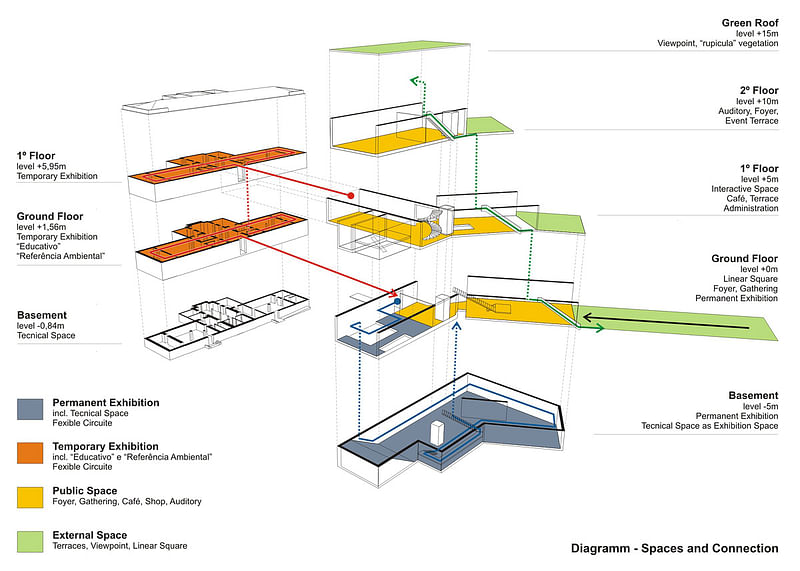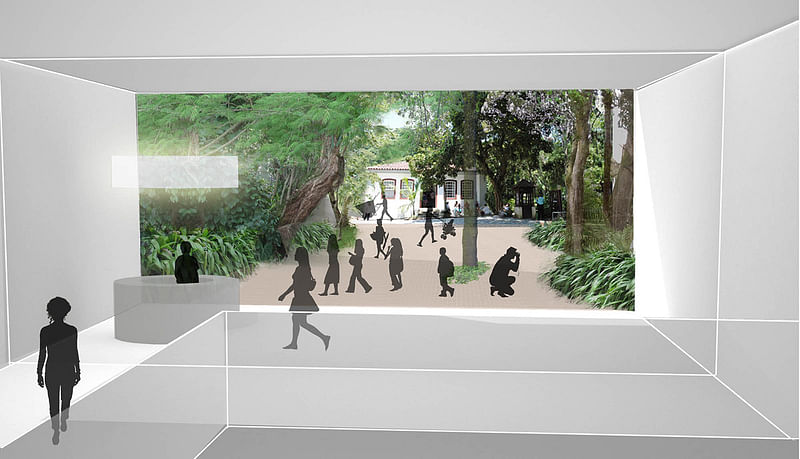Lompreta Nolte's Entry to the MUMA Museum of the Environment Expansion Competition
By Bustler Editors|
Monday, Aug 9, 2010

Related
Following up on last week's story about Jose Herrasti and Maria Fernanda Oppermann Bento's submission to the MUMA Museum of the Environment Expansion in the Rio de Janeiro Botanical Garden, today we bring you the entry by Rio-based Lompreta Nolte Arquitetos, with Daniel Feldman and Elizabeth Añaños.
The “Cultural Complex” at the entrance of the Botanical Garden has shown an immense growth of events, and the Environmental Museum is supposed to be the next and one of the most important elements of the Complex. Thus the project for the Museum Annex is mainly a project about integration – integration of the Museum into the existing facilities and in the environment of the Botanical Garden.

The “Cultural Complex” at the entrance of the Botanical Garden has shown an immense growth of events, and the Environmental Museum is supposed to be the next and one of the most important elements of the Complex. Thus the project for the Museum Annex is mainly a project about integration – integration of the Museum into the existing facilities and in the environment of the Botanical Garden.

INTEGRATION
The center point of the “Cultural Complex” is localized on the square in front of the visitor´s center (16th century construction, imperator´s residence) and serves as the main access to the Park as well to all the cultural installations. The project for the Museum proposes a complete inversion of the existing internal organization in order to enter it from the square side, offering a new linear entrance square and thus connecting it with the visitor´s center and the cultural complex.

The project proposes the fusion of the room-program in a single construction. In that way liberates the areas around the center square and valorizes the historical context.The building consists in a stack of wood-boxes, which are orientated to the main buildings and views of the micro-urban context. Visual axis and terraces form the principal elements of the volumetric composition. The axis of the linear entrance square finds a continuation on top of the stacked wood-boxes creating a landscape in different levels, all connected with the Museum interior.

INTERIOR SPACE
With the new entrance the Museum receives a central access to all Museum Facilities, such as the exhibitions (permanent and temporary) and auditory with restricted access, as also the free spaces like foyer, café, shop and terraces. These rather public spaces are directly connected to the terraces, which form a continuous landscape with its very special views.

The exhibitions are organized in order to offer flexible circuits connecting the historical and the new part of the Museum. The external spaces around the historical building become outdoor exhibition areas with restricted access amplifying the Museum area.

SUSTAINABILTY / ENERGY EFFICIENCY
The Museum Annex is composed by stacked boxes with clearly defined relation between isolated facades and openings. Its concept for the public spaces is based on cross ventilation, which together with shadowing is the most efficient cooling method in hot humid climate. The rather closed exhibition spaces have to use air condition, working with geothermic pre-cooling of the external air.

Green roofs and wood facades provide materials with low absorption rates on order to prevent heat island effects on the building.

Reuse of rainwater and onsite energy production are not only parts of the project, but especially part of the exposition. Apparent installation have the educational effect to explain strategies of energy efficiency to the visitors, including it in environmental education.

ECOSYSTEM
Within the intense bioma of the Tropical Coast Forest “Mata Atlântica”, the insertion of a building can be compared to a formation of rocks, a solid in nature. Understanding the building in that form, it is a space which shall naturally be occupied by “rupicola” vegetation, a local vegetation type, which is dominant on local rocky formation (including the sugar loaf). The sequence of terraces gives space to that local vegetation, and offer to the Museum the representation of a local vegetation specie not yet present in the Botanical Garden.


Share
0 Comments
Comment as :